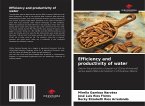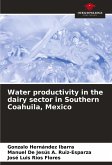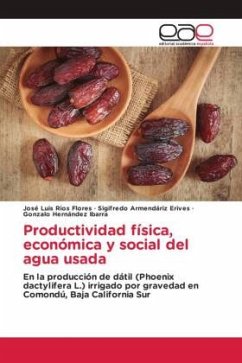The objective of this work was to determine the economic-social productivity of water used in the production of date palm (Phoenix dactylifera L.) in the RDD (Rural Development District) Comondú, Baja California Sur, Mexico and contrast it against the corresponding indicators of the grain corn (Zea mays) crop in the same RDD, through indicators of physical (PFA), economic (PEA) and social (PSA) productivity of water. The methodology used the mathematical models of Rios et al. (2015 a and 2018) that allowed estimating the PFA, PEA and PSA. The results show that the PFA, PEA and PSA of date and grain corn crops were: in PFA: 0.103 and 1.550 kg m-3, in PEA: USD 0.083 and USD 0.009 gain per m3 and in PSA: 3.84 and 4.09 jobs hm-3 respectively. The PEA of the date was higher than crops such as grain corn from the same RDD, rainfed coffee from Chiapas, walnuts from Chihuahua and Coahuila, and bovine milk from Chihuahua, but lower than apples with low, medium or high use of technology from Chihuahua, grapes from Sonora and Coahuila, avocado from Michoacán, and peaches from Zacatecas.
Bitte wählen Sie Ihr Anliegen aus.
Rechnungen
Retourenschein anfordern
Bestellstatus
Storno








